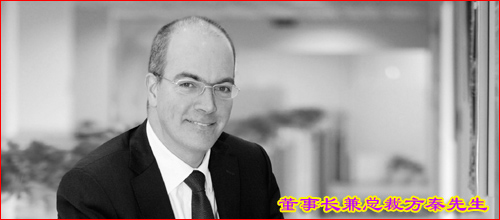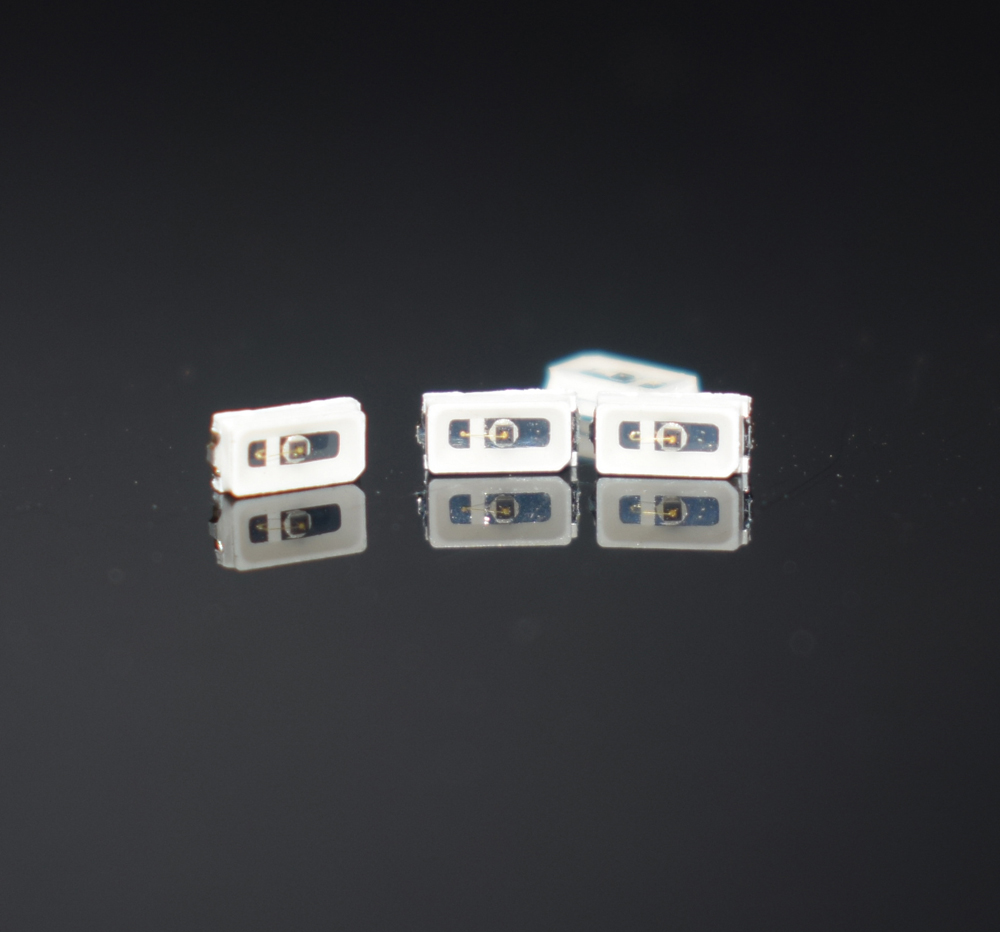 ABB, the world's leading power and automation technology group, has increased its orders in China in the first half of this year by 15% from last year. The company has invested its focus in strategic emerging industries such as renewable energy and railways.
ABB, the world's leading power and automation technology group, has increased its orders in China in the first half of this year by 15% from last year. The company has invested its focus in strategic emerging industries such as renewable energy and railways. On the eve of the National Day, Mr. Fang Qin, president of ABB North Asia and chairman and president of ABB (China) Co., Ltd., interviewed by China Industry News, explained to reporters plans for investing in emerging industries in China.
Fang Qin, 45 years old, has Italian nationality and once worked in France, Italy, and other countries. Since 1995, he has been the project manager and regional manager of ABB Italia. After transferring to the headquarters in Switzerland for 5 years, he is responsible for a business unit of ABB Group's headquarters power system, responsible for the global substation business unit, including the automation of the substation. , protection and control services. On January 1 this year, Fang Qin will assume a new position.
After 10 months of living in Beijing, Fang Qin, who only speaks Chinese characters “Helloâ€, has an in-depth understanding of China’s market and policies.
Provide solutions for emerging markets
Reporter: How do you view China's emerging strategic industries?
Fang Qin: In the emerging market, China is by far the largest market in the world. In 2009, ABB's sales in China accounted for 13% of ABB's global sales. ABB Group CEO Qian Kun recently emphasized at a conference that we must vigorously expand emerging markets and achieve greater growth in these emerging markets.
Reporter: What role will ABB play in developing new industries in China and what opportunities will the company face?
Fang Qin: We have seen the demand of a market in recent years - that is, automation and power business are getting closer together. We need a comprehensive solution.
For wind energy, although ABB is not a wind turbine manufacturer, we provide components and accessories for wind turbines, including motors, distribution transformers, medium voltage, and low voltage products, as well as various transmission technologies required to achieve smooth grid connection of wind energy. And high-voltage transmission equipment.
This is also true in the field of rail transit. ABB can provide 25% of the parts needed for locomotives. Although ABB is not a locomotive manufacturer, we provide key components for major locomotive manufacturers, including inverters, motors, medium voltage, low-voltage circuit breakers, and switches. At the same time, ABB also supplies spare parts for the fixed facilities along the railway line, which includes all the fixed facilities needed to transmit electricity to the electric locomotives.
I would like to specifically mention the development of electric vehicles. Electric vehicle charging requires both power technology and automation technology. On the one hand, it needs to transfer power to the charging station. On the other hand, it also needs a series of automated supporting facilities, including control systems, switching systems, and conversion systems, to truly realize the charging function of electric vehicles. ABB also hopes to become a major supplier of spare parts in this area.
China's smart grid market will lead the world
Reporter: In emerging industries, how do you view the smart grid in China's market development prospects? Compared with the markets of Western countries, what is the development stage of this field?
Fang Qin: Regardless of whether it is from China or the world, smart grid and electric vehicle are emerging markets. The smart grid is facing a very good opportunity in China. It can achieve leapfrog development and become a leading global market. I have already seen this prospect. The development of smart grids around the world is different, because different countries have different needs, so the development of smart grids in different countries presents different forms.
For example, in the United States, smart grids are more related to automated power distribution applications. By installing smart measuring instruments in the home to control energy demand and energy consumption, back-end energy suppliers and systems can use this to deploy loads. Load and distribution. In Europe, the main investment direction of smart grids is to connect different grids in different countries.
Due to China's special geographical environment, it is necessary to transfer large-capacity power from the water-rich energy-rich inland regions of the west to the eastern regions where energy demand is concentrated, and to use new wind energy resources from the inland regions of the north and Inner Mongolia for efficiency. Large-capacity forms are transported to the eastern coast. This requires certain hardware facilities, such as UHV transmission lines, as well as the need to use appropriate software equipment to control the current and voltage in order to be able to more efficiently and intelligently transfer power to places where electricity is needed. For these needs mentioned above, ABB has the corresponding technology to meet.
Independent research and development to promote competition
Reporter: Does independent innovation restrict the development of multinational companies?
Fang Qin: In fact, this issue has already appeared on my desk on the first day I came to China.
I think the purpose of independent research and development is to promote local industrial companies to innovate and improve their competitiveness in the local market. These local industrial companies also include ABB. The ultimate goal of advocating independent research and development is not to restrict competition, but to encourage competition by encouraging everyone to innovate.
Reporter: How does the R&D of the company relate to local innovation?
Fang Qin: The concept of ABB serving China is completely consistent with the policy of independent research and development. We bring the entire production value chain to China, including R&D, production, and final service links. The purpose is to do research and development for the local market and serve the requirements of the market.
I think the intrinsic meaning of independent research and development is consistent with what ABB understands. It is consistent with our efforts in the past 20 years.
Allowing employees to have enough room for development
Reporter: Please combine your own experience with ABB and talk about how ABB can cultivate leading talent in global business. What are the challenges that ABB has encountered in cultivating talents?
Fang Qin: In the past 15 years, I have been receiving various training opportunities at ABB, allowing me to develop targeted capabilities such as technical capabilities, business management capabilities, and so on. ABB provides all the capabilities needed to manage a business, a large business organization like ABB.
How to retain talent is a core issue for all companies.
In China and other countries, the most important thing to attract talent and retain talent is to share the corporate culture with them. I think ABB's corporate culture is very unique. In addition, these talents must also be provided with sufficient development opportunities so that they can face new challenges and provide them with practical opportunities in different business areas, different geographical environments, different market environments, and different businesses and product lines.
At the same time, ABB will also formulate plans for the development of outstanding talents and provide enough job challenges so that they have enough room for development.
3014 SMD IR LED supplier from China.
3014 SMD IR LED is used in LED infrared light guide plate and LED infrared backlight screen because of the small size of the product.

We produce and sell 3014 SMD IR LED , which is with the wavelength from 680nm-1550nm. In this category, we mainly introduce the two kinds of wavelengths: 940nm IR LED and 850nm IR LED. These two wavelengths are the most commonly used wavelengths in infrared monitoring. They all can be used to monitor products.
940nm infrared LEDs are totally invisible to the naked eye, which means you can't see whether the 940nm working or not. Unless you watch it through some device(like phone's camera), which will show some purple or white color light.
The 850nm infrared LEDs have a very slight reddish when it's working, which means you can see if the 850nm LED is working.
Under the same power, radiation intensity of 850nm will be higher than the 940nm. Of course, 940nm also has its own unique advantages. It is the naked eye that is indistinguishable from work or from work, therefore, its application has been widely used in many special markets in the modern era.
We supply the 3014 940nm SMD IR LED and 3014 850nm SMD IR LED products with difference power, such as: 0.1W 940nm, 0.2w 940nm, 0.3w 940nm, 0.4w 940nm, 0.1W 850nm, 0.2w 850nm, 0.3w 850nm, 0.4w 850nm and so on.
3014 SMD IR LED
3014 SMD IR LED,SMD IR LED, 3014 IR LED, 3014 SMD LED
SHENZHEN BESTLED OPTO-ELECTRONIC CO.,LTD , http://www.bestsmd.com